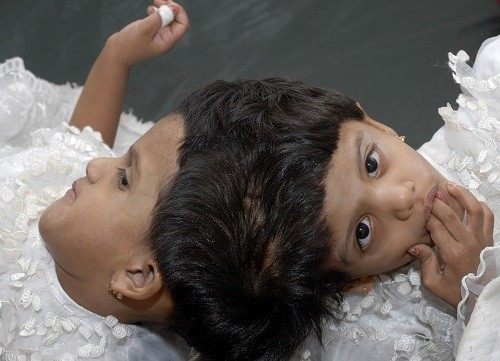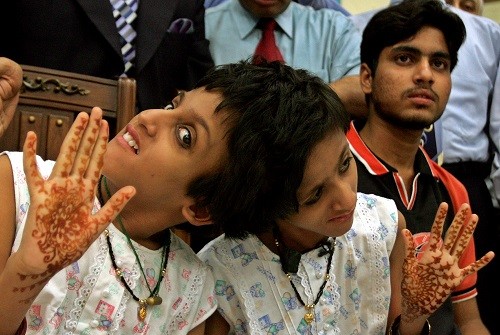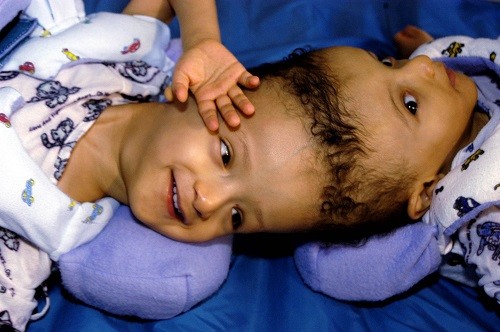They came to this world physically joined to each other, but celebrated their first birthday separately.
A team of specialists at a Delhi hospital has successfully separated a pair of Nigerian twins, who were born joined at the buttocks, last month.
The girls, Hussaina and Hassana from Kano, were born with a condition known as pygopagus, where they shared their lower spinal cords, lower gastrointestinal tract and genitor-urinary tracts, with a common anus and genitalia.
As the doctors in Nigeria had little hope of saving both babies, they referred them to specialists at the BLK Super Speciality Hospital in Delhi.
A team of specialists under the supervision of Paediatric Surgeon Dr Prashant Jain conducted two life-changing surgeries to separate the babies. On 25 May, plastic surgeons inserted tissue expanders or silicon bags under the babies' skin on the buttocks. The silicon bags were inflated with saline, weekly, for two months. This helped to expand the skin and creation of tissue cover for the surgery.
At the end of the second surgery that lasted nearly 13 hours on 12 August, the specialists successfully separated the girls. Through another reconstruction surgery, the babies received separate genitalia and anal openings.
The girls celebrated their first birthday on 28 August.
Conjoined twins have been a much-talked about subject among medical enthusiasts around the whole world. According to health experts at the University of Maryland Medical Center, Baltimore in the US, such births are rare. One out of every 2, 00,000 live births have very few chances of survival - between five percent and 25 percent.
The whole process of twinning starts from the mother's womb, during the early stages of pregnancy. Conjoined twins are formed when a woman releases a single egg that fails to separate completely after fertilisation. Though the embryo starts splitting into two, the process stops in the middle and the partial separation results in conjoined twins.
Mary and Eliza Chulkhurst, commonly known as the Biddenden Maids who were born in England in the year 1100 and Eng and Chang Bunker, commonly called Siamese Twins, who were born in Thailand in 1811 are some of the famous conjoined twins in the history of medical science.
























